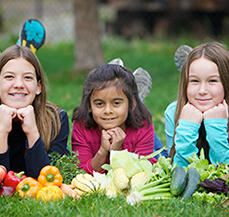
A Guest Post from Our Partner Healthy Skoop
We know that the definition of the word ‘superfood’ is infamously wishy-washy. As a plant-based nutrition company, we like to think of superfoods as any plant-based food with multiple benefits for your body and basically no potential negative effects. We know it’s a pretty wide definition--in fact, it makes ’super’ almost synonymous with ‘healthy’--but superfood is so much more fun to say, and super is how these foods will make your body feel.
So the question remains--how can you get picky eaters under twelve to hop on the plant-power train so that they can get their super on? Below we’ve listed our top five kid-friendly superfoods, along with some preparation ideas to make these nutritional powerhouses palatable to even the youngest of palettes.
1. Banana
WHY:
- Helps build strong bones by increasing calcium absorption
- Acts as a prebiotic, feeding the healthy bacteria that live in the gut.
- Has high levels of potassium, which is good for the nervous system and can prevent muscle cramps during exercise.
HOW:
- They are naturally kid-friendly because of their sweet, mild taste, and the fact that they come in their own fun little compostable package (peel).
- If your kids still object, you can always try making this frozen banana “ice cream”. It’s incredible, and if you haven’t had it, you have not lived.
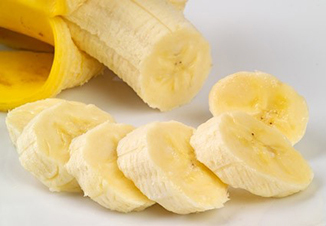

1. Banana
WHY:
- Helps build strong bones by increasing calcium absorption
- Acts as a prebiotic, feeding the healthy bacteria that live in the gut.
- Has high levels of potassium, which is good for the nervous system and can prevent muscle cramps during exercise.
HOW:
- They are naturally kid-friendly because of their sweet, mild taste, and the fact that they come in their own fun little compostable package (peel).
- If your kids still object, you can always try making this frozen banana “ice cream”. It’s incredible, and if you haven’t had it, you have not lived.
2. Tomato
WHY:
- Contains all four major carotenoids, which are phytochemical compounds that plants create through photosynthesis. They give red, orange, and yellow color to plants and are thought to prevent disease in the human body.
HOW:
- Whip up some marinara sauce to serve with whole-wheat pasta, or even make a healthy homemade veggie pizza. You don’t need to feel guilty about using cooked canned tomatoes, because cooking tomatoes actually makes them higher in lycopene, the carotenoid with the highest antioxidant activity. Just make sure your can is BPA free!
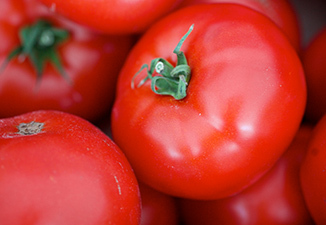

2. Tomato
WHY:
- Contains all four major carotenoids, which are phytochemical compounds that plants create through photosynthesis. They give red, orange, and yellow color to plants and are thought to prevent disease in the human body.
HOW:
- Whip up some marinara sauce to serve with whole-wheat pasta, or even make a healthy homemade veggie pizza. You don’t need to feel guilty about using cooked canned tomatoes, because cooking tomatoes actually makes them higher in lycopene, the carotenoid with the highest antioxidant activity. Just make sure your can is BPA free!
3. Almonds
WHY:
- Great source of high-quality plant-based protein.
- Contain a powerhouse of nutrients that support brain health and development--great news for school-aged kids!
HOW:
- Try serving them raw or roasted or as a part of a trail mix for a healthy, hearty snack.
- Look for low-sugar or no sugar added almond butter. Use it on toast or as a part of ants-on-a-log.
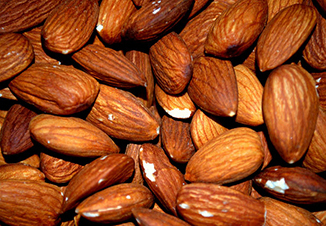

3. Almonds
WHY:
- Great source of high-quality plant-based protein.
- Contain a powerhouse of nutrients that support brain health and development--great news for school-aged kids!
HOW:
- Try serving them raw or roasted or as a part of a trail mix for a healthy, hearty snack.
- Look for low-sugar or no sugar added almond butter. Use it on toast or as a part of ants-on-a-log.
4. Avocado
WHY:
- Full of healthy monounsaturated fat, which helps with absorption of fat-soluble nutrients.
- Contains high levels of the antioxidant carotenoid lutein, which protects eye health.
HOW:
- The possibilities are endless. Throw sliced up avocado on a sandwich or on top of tacos, or go all out and make guacamole.
- If the kids are still turned off by this oddball green fruit, you can always throw a quarter of an avocado in a smoothie. The creaminess will delight, but the taste will be undetectable when combined with other ingredients.
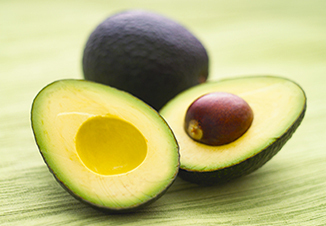

4. Avocado
WHY:
- Full of healthy monounsaturated fat, which helps with absorption of fat-soluble nutrients.
- Contains high levels of the antioxidant carotenoid lutein, which protects eye health.
HOW:
- The possibilities are endless. Throw sliced up avocado on a sandwich or on top of tacos, or go all out and make guacamole.
- If the kids are still turned off by this oddball green fruit, you can always throw a quarter of an avocado in a smoothie. The creaminess will delight, but the taste will be undetectable when combined with other ingredients.
5. Blackberries
WHY:
- Packs 40% of the recommended daily value of Vitamin C and 7.6 grams of fiber in each cup.
- Deep blue color comes from high anthocyanin level, which means a big boost of antioxidants.
HOW:
- Berries are like nature’s candy; they’re delicious as is. If you feel like getting fancy, make your own homemade blackberry jam, with no added sugar or pectin, and use it to make some seriously scrumptious PB&J’s!
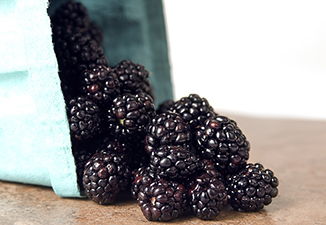

5. Blackberries
WHY:
- Packs 40% of the recommended daily value of Vitamin C and 7.6 grams of fiber in each cup.
- Deep blue color comes from high anthocyanin level, which means a big boost of antioxidants.
HOW:
- Berries are like nature’s candy; they’re delicious as is. If you feel like getting fancy, make your own homemade blackberry jam, with no added sugar or pectin, and use it to make some seriously scrumptious PB&J’s!
So there you have it, the superfoods that will give your kids the fuel they need to grow and learn--at home and at school. For more information about how schools can incorporate superfood tastings and activities into their nutrition curriculums, check out the work we’re doing with Chef Ann Foundation through Project Produce, and get your super on!
Interested in reading more helpful articles from us? Sign-up for our newsletter in the footer below.





